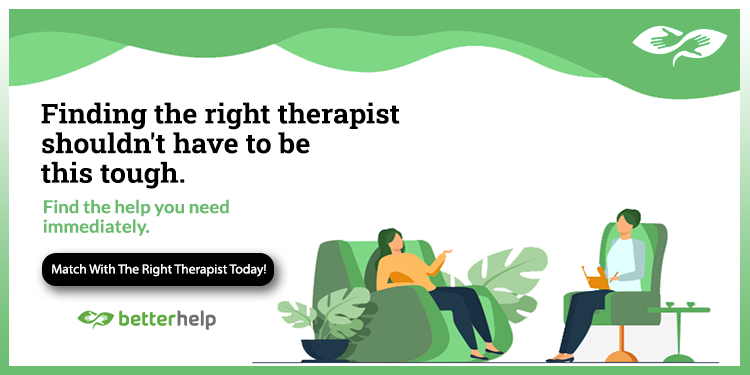The Guilt of Choosing Yourself for the First Time
Guilt. It arrives with unmistakable intensity—a wave of discomfort washing through your body when you finally say no to an unreasonable request. The tightness in your chest after booking a solo trip you’ve always wanted to take. The knot in your stomach when you set a boundary with someone who’s accustomed to your endless accommodation. This visceral response has a name: the guilt of choosing yourself for the first time.
This guilt feels paradoxical—after all, you’re simply meeting your own legitimate needs, something that should feel natural and right. Yet for many, the act of prioritizing personal wellbeing triggers profound discomfort. I work with a woman who physically recoils when she imagines telling her family she won’t be hosting holiday gatherings anymore, despite the fact that these events leave her depleted for weeks. “It feels like I’m committing a crime,” she explains, “even though the only thing I’m taking is something that was already mine.”
This response makes sense when we consider its origins. Many of us absorb early messages linking self-consideration with selfishness. A child praised for sharing their last cookie learns that self-sacrifice equals approval. Another whose needs were consistently overlooked learns their wants matter less than others’. A third who witnessed a caregiver’s complete self-abnegation internalizes this as the template for love.
These lessons become embodied, creating physical responses to self-prioritization that feel like warning signals: danger, wrongness, threat.
Cultural narratives reinforce these patterns. Many traditions explicitly elevate selflessness as the highest virtue while demonizing self-focus as the root of moral failure. Gender expectations often amplify this dynamic, with women particularly receiving continual messaging that care for others should supersede personal needs. Professional contexts may similarly reward those who consistently prioritize organizational demands over personal boundaries. We live surrounded by stories celebrating martyrdom while offering few models of healthy self-stewardship.
The guilt response manifests uniquely in different bodies. Some experience it as a hollow sensation in the pit of the stomach. Others feel a tightening across the chest, as though an invisible band constricts their breathing. Still others notice a subtle withdrawal of energy from their limbs, a physical pulling back from their own choice. These sensations are not random but reflect specific learned associations between self-prioritization and perceived danger—whether to important relationships, social belonging, or core identity.
One client described his physical response to declining a family obligation as “feeling like I’m falling off a cliff.” This dramatic sensation reflected his early experience where parental approval was entirely contingent on meeting others’ expectations. His nervous system had literally learned to perceive self-choice as threatening to survival. Another noticed her voice would automatically soften and rise in pitch when attempting to express a personal need, physically undermining her capacity to be heard even when she found the courage to speak.
Try this experiment: Think of something you genuinely want or need that would require prioritizing yourself over others’ expectations or demands. Perhaps it’s taking time alone, pursuing a personal interest, or declining a request. Notice what happens in your body as you imagine choosing yourself in this situation. Where do you feel constriction or discomfort? What sensations arise? What impulses emerge—perhaps to immediately qualify or apologize for your choice, to create an elaborate justification, or to abandon the idea entirely? These responses reveal your particular pattern of embodied guilt.
Understanding this pattern creates space for change. One approach involves consciously tracking these physical responses without immediately reacting to them. When you notice guilt arising around self-prioritization, pause and name the sensations: “I’m feeling tightness here… heaviness there… an urge to apologize…” This simple awareness itself begins to transform automatic reactions into conscious choices.
Working with a man who struggled to invest time in his creative pursuits, we developed a practice of “guilt surfing.” When he would schedule time for his writing and feel the familiar wave of guilt rising, he would imagine himself riding this wave rather than being submerged by it. He would notice its intensity, track its physical manifestation, and simply stay present as it inevitably shifted and changed. Over time, these waves became less overwhelming as his nervous system learned they weren’t actually dangerous.
Psychosomatics vol. 4 – Pancreas – what does the body tell us?
Physical practices can support navigating guilt around self-choice. Many find that consciously grounding before making self-prioritizing decisions helps counteract the destabilizing effect of guilt. Try this: Stand with your feet firmly planted hip-width apart, feeling the solid connection with the floor. Take several deep breaths, imagining your exhales traveling all the way down through your feet into the ground. From this grounded place, state your intention to choose yourself in this specific instance. Notice if being physically anchored creates even slightly more capacity to tolerate the discomfort.
Another helpful approach involves distinguishing between the familiar discomfort of guilt and the deeper settleness of alignment with your authentic needs. The unfamiliarity of choosing yourself can trigger alarm simply because it’s new territory, not because it’s wrong. One woman realized that beneath the initial wave of guilt about taking a solo weekend away from family responsibilities lay a quieter sensation of rightness in her core. By staying present through the louder guilt response, she could access this deeper knowing.
The journey toward choosing yourself involves recognizing that genuine self-care differs fundamentally from selfishness. Selfishness takes without consideration for others’ wellbeing. Self-care recognizes that your wellbeing matters equally—not more, but not less—than others’. This truth can feel revolutionary for those accustomed to placing themselves last in every equation.
Small experiments help recalibrate this understanding. Begin with low-stakes situations where choosing yourself feels challenging but not impossible. Perhaps eating the last piece of cake without offering it to everyone else first. Maybe taking ten minutes of solitude when others want your attention. Notice both the guilt that arises and what happens when you move through it anyway. Did relationships collapse? Did catastrophe ensue? Or did life continue with perhaps some minor discomfort but no actual disaster?
One client found it helpful to explicitly name her guilt response when setting boundaries with her adult children. “I notice I’m feeling guilty about not babysitting this weekend, and I’m choosing to honor my need for rest anyway.” This transparent acknowledgment helped her internal system recognize that she wasn’t ignoring the old warning signals but was consciously choosing a new response. Over time, both she and her family adapted to her healthier boundaries.
The process of choosing yourself often triggers grief alongside guilt. There’s legitimate loss in recognizing how long you’ve abandoned your own needs, how many experiences you’ve missed while prioritizing others, how differently your life might have unfolded with greater self-consideration. This grief deserves acknowledgment and compassion rather than minimization.
Working with a woman who’d spent decades subordinating her desires to her demanding partner’s preferences, we created space to mourn the experiences she’d sacrificed—travels untaken, friendships neglected, creative pursuits abandoned. This mourning process, while painful, created necessary clearing for new choices. Her grief became not a reason to continue self-abandonment but powerful motivation for living differently moving forward.
The guilt of choosing yourself naturally diminishes with practice and time. Each experience of setting a boundary, expressing a need, or prioritizing your wellbeing without disaster following helps your nervous system update its understanding. What once felt dangerous slowly transforms into the new normal. The woman who could barely tolerate booking a solo weekend eventually planned a month-long creative retreat, feeling excitement substantially outweigh her residual guilt.
This recalibration reflects a profound truth: choosing yourself sustainably actually serves everyone. The parent who maintains healthy boundaries raises children who understand appropriate limits. The partner who honors personal needs brings authentic presence rather than resentful obligation to the relationship. The friend who can say no when necessary brings genuine yes when possible. Far from being selfish, appropriate self-consideration creates the foundation for genuine generosity—giving from fullness rather than depletion.
Notice too that genuine self-choice involves discernment rather than rigid self-prioritization in every situation. There remain times when others’ acute needs legitimately take precedence, when short-term self-sacrifice serves deeper values. The difference lies in conscious choice versus automatic self-abandonment, in the capacity to distinguish between appropriate care for others and habitual dissolution of your own boundaries.
As you practice choosing yourself through the discomfort of guilt, you gradually rewrite the internal equation that links self-consideration with moral failing. Your body learns new associations, developing physical signatures of self-respect that become as familiar as the old patterns of guilt once were. The shoulders that once hunched in apology for taking space begin to settle at their natural width. The voice that habitually softened when expressing needs finds its authentic resonance. The breath that shallowed in anticipation of rejection deepens into the belly, creating capacity for both giving and receiving.
Remember that the guilt of choosing yourself for the first time doesn’t signal wrongness but growth—the natural discomfort of expanding beyond familiar constraints. Each time you feel this distinctive discomfort and choose yourself anyway, you’re not just making a single decision but gradually rewriting your fundamental understanding of your place in the world. You’re establishing the radical truth that your needs matter, your desires count, your boundaries deserve respect—not despite your connections with others but as essential foundation for genuine relationship.
The path isn’t linear. You’ll have days of courage followed by reflexive returns to self-abandonment. You’ll encounter relationships that adapt to your emerging self-honoring and others that resist or collapse without your former accommodation. Through it all, the capacity to recognize and tolerate the guilt of choosing yourself gradually transforms this once overwhelming sensation from a stop sign into merely a familiar landmark on the journey toward authentic living.

Keywords: Guilt, Anxiety, polyvagal theory, gestalt therapy, psychotherapy, parents, parental trauma, somatic experiencing, Licensed therapist near me in Manhattan NYC, Affordable therapy services in New York State, Holistic psychotherapy sessions in NYC, Somatic Experiencing therapy for trauma recovery in New York City, NARM therapy in Brooklyn, Licensed couples therapy in Manhattan, Gestalt therapy near me in NYC, Marriage counseling in Queens NYC, Therapy for anxiety treatment in NYC, Experienced psychotherapist in New York, Licensed psychotherapist near me in NYC, Somatic Experiencing therapy sessions in New York, Trauma therapy and counseling in Manhattan, Gestalt therapy sessions in New York City, Therapy sessions for emotional regulation in New York, Trauma therapy near me in Brooklyn New York, Licensed mental health therapist in Manhattan NYC, Depression therapy in New York, New York City therapist experienced in PTSD treatment
Contact us: Feel and Heal Therapy Office
For companies: Creative Manager
Suppressed anger: uncovering the path to chronic illness









